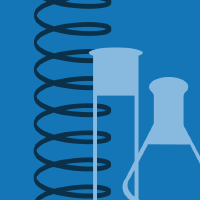Topic Menu
► Topic MenuTopic Editors


Application of Aqueous Two-Phase System
Topic Information
Dear Colleagues,
Aqueous two-phase technology is a new separation and enrichment technology that has been developed in recent years. This technology has the advantages of simple operation, high separation efficiency, a high enrichment factor, mild mass transfer, low organic solvent consumption and low cost. It is widely used in the separation of active biomolecules, sample preparation for instrumental analysis, and the separation of organic contaminants. The main goals of this Topic are to publish the recent developments of new technologies and methods based on aqueous two-phase systems for the separation of bioactive substances.
Dr. Bin Jiang
Prof. Dr. Zhibiao Feng
Topic Editors
Keywords
- separation and purification
- aqueous two-phase system
- bioactive bubstances
- natural products
- extraction
- biomolecules
Participating Journals
| Journal Name | Impact Factor | CiteScore | Launched Year | First Decision (median) | APC |
|---|---|---|---|---|---|

Analytica
|
- | 1.8 | 2020 | 12.8 Days | CHF 1000 |

Energies
|
3.0 | 6.2 | 2008 | 17.5 Days | CHF 2600 |

Materials
|
3.1 | 5.8 | 2008 | 15.5 Days | CHF 2600 |

Molecules
|
4.2 | 7.4 | 1996 | 15.1 Days | CHF 2700 |

Separations
|
2.5 | 3.0 | 2014 | 12.4 Days | CHF 2600 |

MDPI Topics is cooperating with Preprints.org and has built a direct connection between MDPI journals and Preprints.org. Authors are encouraged to enjoy the benefits by posting a preprint at Preprints.org prior to publication:
- Immediately share your ideas ahead of publication and establish your research priority;
- Protect your idea from being stolen with this time-stamped preprint article;
- Enhance the exposure and impact of your research;
- Receive feedback from your peers in advance;
- Have it indexed in Web of Science (Preprint Citation Index), Google Scholar, Crossref, SHARE, PrePubMed, Scilit and Europe PMC.

